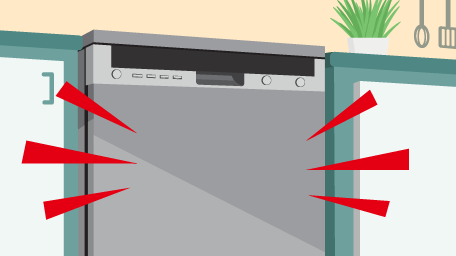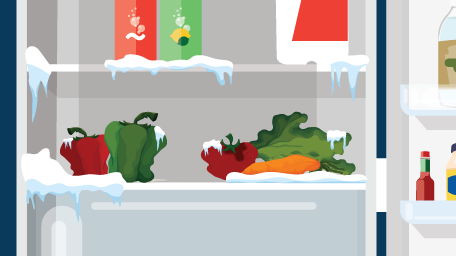
Troubleshooting Frost Buildup in your Fridge/Freezer
Is your fridge/freezer covered in frost? This is a common problem for any kitchen. Freezers are so important, and any issues can feel stressful. No worries, however, we are here to help. Take a look at our full video guide or read our written guide below for an outline of the most common problem areas:

The first thing we need to determine where this issues is stemming from, whether air infiltration issues or problems with the circuitry.
Now, to determine whether or not we have an excessive frost problem based on air infiltration,we'll first look for the symptoms.
Door Lid and Gasket
A broken door lid or gasket will lead to an improper seal. Without an air-tight seal, temperatures can fluctuate, and dampness can build, resulting in frost. Check the gasket for leaks or damage. If you find frost in one specific area, then that is likely where the leak is, and the part should be replace. If there are no leaks, then move on to the other areas.
Defrost Timer
Now, if the problem has to do with the defrost function itself, we would look for components in that defrost cycle. If you’re noticing frost in your freezer, then this may indicate an issue with the defrost timer. Try turning on the defrost timer manually (check your user manual for instructions) and check to see if the other components work normally. If they do, then the timer is the issue and should be replaced.
Defrost Thermostat
If the defrost cycle does not initiate, then there may be a problem with the defrost thermostat. You can test the thermostat using a multi-meter. The part should have continuity when at freezing temperature, and should be an open circuit when the temperature is above 37 degrees Fahrenheit. A lack of continuity means that the thermostat cannot power the heater, leading to frost in the freezer. If this is the problem, then the part should be replaced.
If it does not do that, suspect that the timer may be bad.
On models that use an adaptive defrost control or electronic control, there are typically methods to test that. They are specific to the manufacturer and you will need to consult the technical information for your particular model.
Your fridge should now be good to go! Keep an eye on any ice build up, especially in the areas you noticed it before. Make sure to keep the door closed when you are not using it, and if you need any parts for your repairs please check out PartSelect.com




























